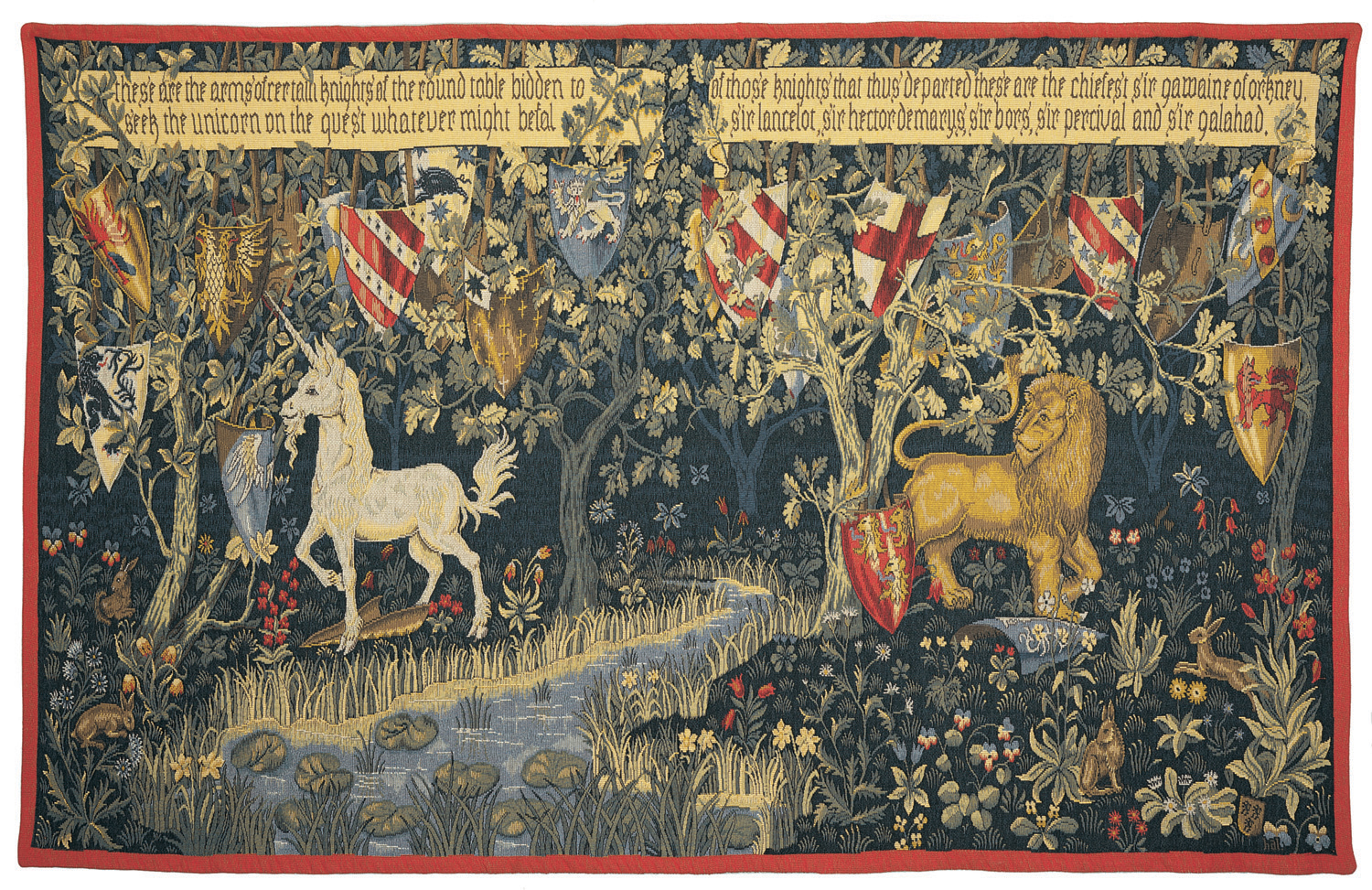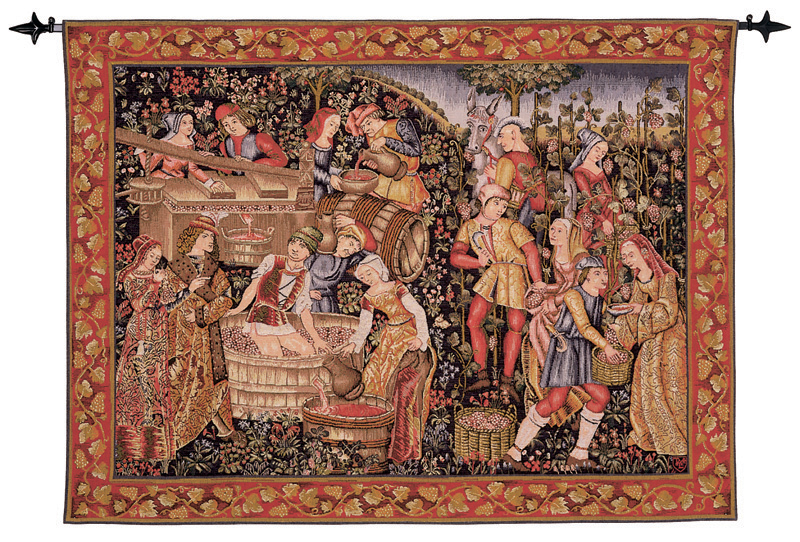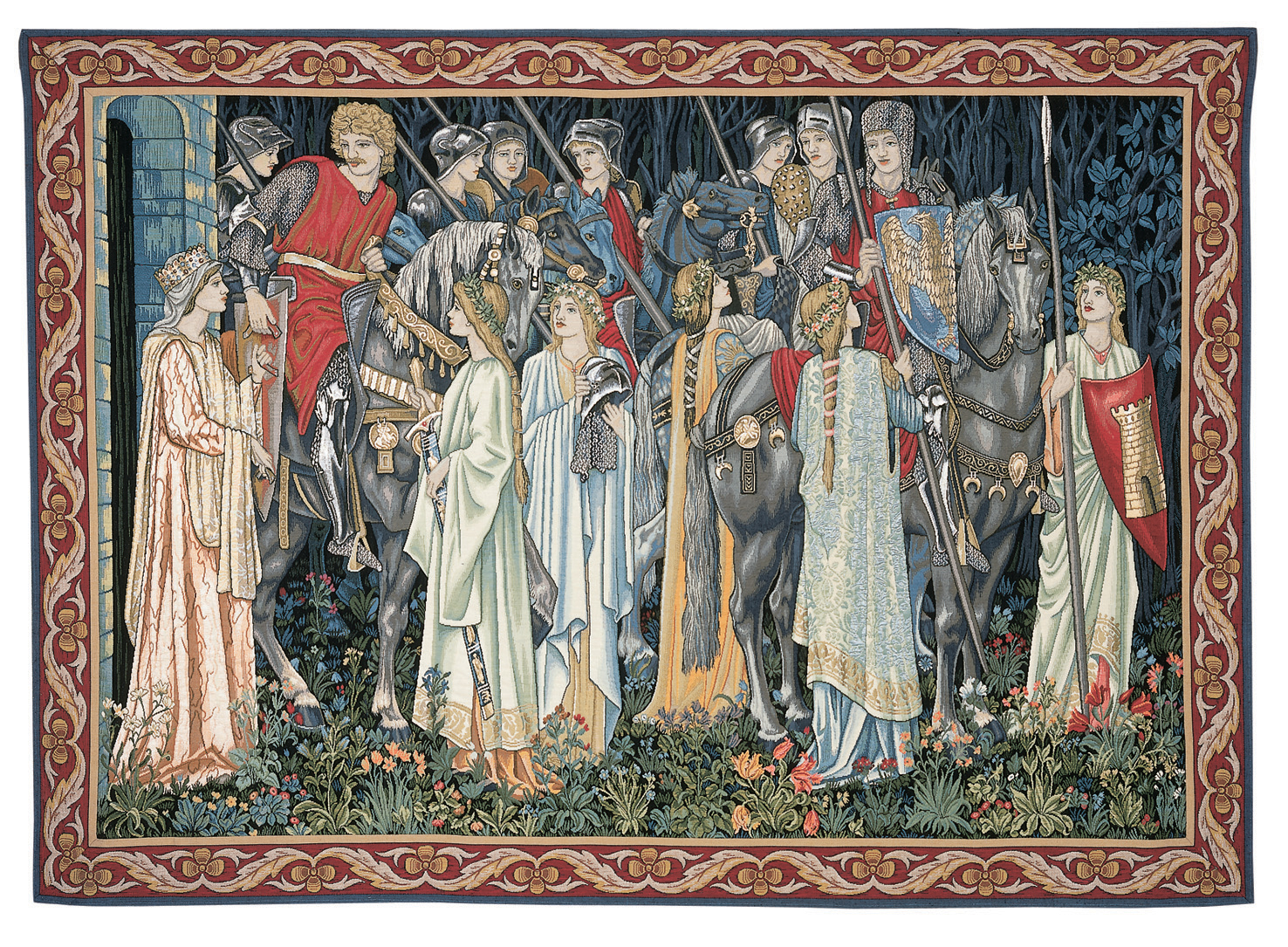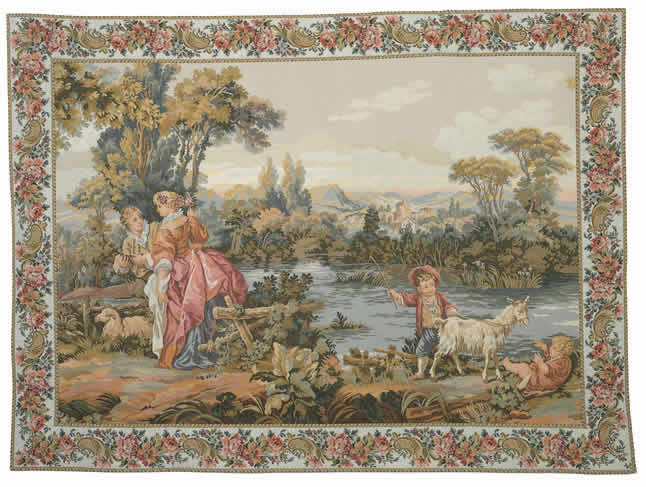History of Tapestries
Tapestry is one of those French traditions which, through the centuries, has made a rich contribution to the beauty of French heritage.
In the Middle Ages (13th and 15th centuries), until the Hundred Years War, the Ile-de-France was the leading producer, with Paris the undoubted capital. Then the war and the systematic plundering of towns sent the tapestry makers fleeing northwards where they founded the Ateliers d’Arras (Arras studios). When Arras was pillaged, they went on towards Flanders which became their new centre.
These tapestry makers, true craftsmen worked in family concerns, wove mythological scenes and later on, medieval scenes, taking their inspirations from the translations of Greek and Latin texts.



Medieval Age
Towards the end of the 15th century, the Val de Loire became a popular place for tapestry makers, and it was in this “cradle of French kings” that the most prestigious works were made, now found in museums. This was the period of the “Mille Fleur” tapestry, with rural scenes overflowing with freshness and charm, where gentle ladies, lords and peasantfolk frolic on a background of “bord de Loire” flowerets. Perhaps some of the finest examples are the series of the Lady with the Unicorn tapestries, which hang at the Cluny Museum in Paris.
The Age of Chivalry.
The end of the Middle Ages saw appearance of epic scenes. Kings and princes had tapestries woven of their tournaments, combats, victories and even their hunting parties. This period remains the most prolific for unrivalled masterpieces. Arming and Departure For The Quest (left) was designed by William Morris and was woven by Morris & Company in their studio at Merton Abbey, Surrey, around 1895. The original tapestry was commissioned by William Knox DArcy to decorate his house, Stanmore Hall in Middlesex. Inspired from the ancient legends of King Arthur, the scene represents the arming and departure of the Knights of the Round Table, among whom are Sir Gawaine of Orkney, Sir Lancelot of the Lake, Sir Hector de Marys, Sir Bors de Gamys, Sir Percival and Sir Galahad. The setting of the departure is outside the walls of Camelot, the legendary court of the realm of King Arthur. Against a background of a dark and perilous forest, the ladies of the court are helping to arm the mounted knights. On the left, Queen Guinevere is seen handing a shield to Sir Galahad, while to the right Sir Gawaine is prominent, holding a shield with a golden eagle. The mille-fleurs (thousand flowers) in the foreground is derived from medieval tapestries, and was designed by J.H.Dearle, providing a gothic atmosphere to the scene. Although the theme is not intended to depict any particular period of history, the costumes are based on styles from the Middle Ages, the Arthurian legends having evolved over a long period of time. The figures were designed by Burne-Jones and the heraldry by William Morris. The original tapestry can be viewed at the Birmingham Museum, and measures 244x362cm (8×12).
Renaissance
With the Renaissance and the arrival of the Italian artists, tapestry radically changed style. Associating painting and tapestry, Raphael introduced the art of compositions, order, clarity, perspective, décor and the rich borders and arabesques that characterized the highly coloured style of the Renaissance period.
Around 1530 in France, Francois 1 foundered the first royal tapestry factory in Fontainebleau, near Paris. Around 1660 Colbert established the royal factory of Les Gobelins, then Beauvais 4 years later, under the protection of Louis XIV. More than 800 tapestry makers could be seen at the Gobelins in Paris, under the direction of Chares Le Brun, whose idea was to group the artists according to their various talents and tastes. This is why it was not unusual to find panels signed by several different artists.
After the death of Louis XIV, the official formal subjects disappeared to give way to more imaginative subjects. Tapestry weaving became more romantic with beautiful landscapes. This style reach its peak with Boucher.
The French Revolution put a stop to the creative genius of the tapestry makers, but in 1795, Beauvais, Aubusson and Gobelins reopened, and until the 19th century reproduced the designs of great artists of the royal factories.
To-day, although there are more than five centuries between us and the first major works woven by these tapestry makers, we are proud to be able to offer all art lovers, genuine collector’s items to decorate a room, whatever the style or the size of the interior.
These works of art, painstakingly created by these artists are presented in our gallery.

